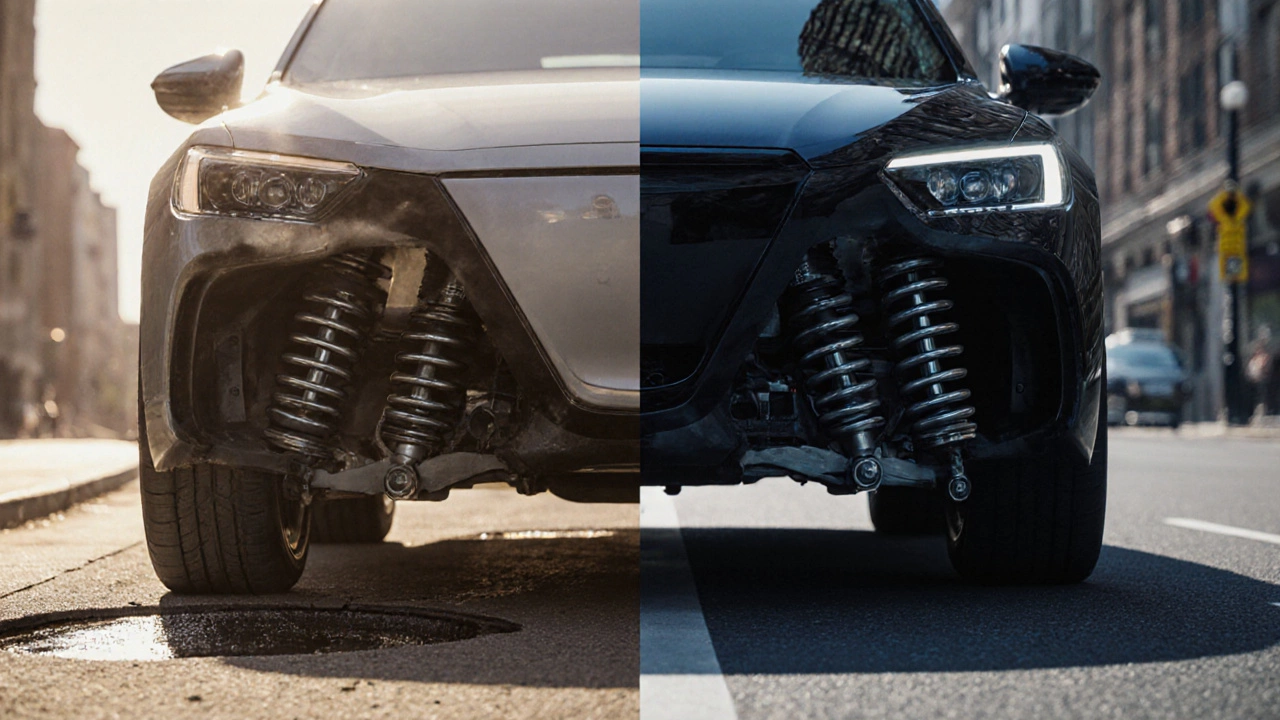Soft Suspension: Understanding the Problem and How to Fix It
When dealing with soft suspension, a condition where the car’s suspension feels overly pliable, causing loose handling and uneven tyre wear. Also known as worn‑out suspension, it usually points to wear in core components such as suspension shocks, the dampers that control bounce and rebound or suspension springs, the coils that support vehicle weight and maintain ride height. Understanding how these parts work together helps you spot problems early and avoid costly repairs later.
Common Signs That Your Suspension Is Too Soft
Drivers often notice a "floaty" feeling when cornering, a noticeable dip after loading the car, or an early wear pattern on the inner or outer tyre edges. Those symptoms usually mean the soft suspension is no longer keeping the wheels in proper alignment, which can lead to reduced grip and unsafe steering responses. Bad wheel alignment, the precise angle of each wheel relative to the road and each other is a frequent companion of worn shocks and springs; mis‑alignment can accelerate tyre wear and make the car feel sluggish. Another red flag is audible clunking or squeaking over bumps, indicating that bushings or mounts have lost their firmness. If you feel the car bounce more than usual after hitting a pothole, the shock absorbers are likely leaking fluid or have broken internal seals, which directly contributes to that soft ride.
Fixing a soft suspension starts with a thorough inspection. Mechanics will check shock absorber stroke, spring sag, and any play in control arms or ball joints. Often the solution is a simple replacement of aged shocks or weakened springs, but if the chassis frames are bent—common after a collision—realignment or structural repair may be needed. Costs vary: a set of quality shocks for a midsize car runs around £150‑£300, while full spring replacement can add another £200‑£400. Alignments typically cost £50‑£80, but ignoring them can cost far more in tyre replacements down the line. When the damage is extensive, such as a bent sub‑frame, professional chassis straightening becomes essential to restore safety and handling.
Below you’ll find a curated collection of articles that dig deeper into each of these topics— from spotting early warning signs to choosing the right replacement parts and understanding the costs involved. Whether you’re looking to DIY or decide when to visit a specialist, these guides give you the practical insight you need to keep your ride steady and safe.
 10 October 2025
10 October 2025
Soft vs Stiff Suspension: Which Is Better for Your Car?
Explore the pros and cons of soft vs stiff suspension, learn how to match your setup to driving style, and get practical tuning tips for comfort or performance.






0